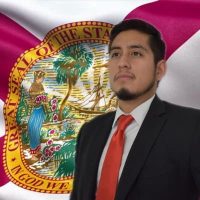
America was born out of a War for Independence. If we want to reclaim our country, then we must think of the current political struggles in which we’re involved as a second war for independence.
And, as in any war, strategic thinking is crucial to victory.
First, it is important to understand that this is a war in the literal sense — the end object is political power, and the question is who will govern and in what way.
But it is not a war of arms; rather, we are fighting for influence and the control of social (not just governmental) institutions.
I previously wrote that within every society, there exist various centers of power. The official government, in its various manifestations (the legislature, the courts, the executive, law enforcement), is the most obvious center of power.
But there are many others: churches, trade and labor unions, schools, businesses, wealthy power brokers, political machines, organized crime, the media, artists, and influencers.
In a society, these power centers work together, and are often at odds with each other. The power of any given one of these fluctuates, and it’s not uncommon for one or more of them to have more power than the government.
For instance, there are towns where the big coal mine or factory producing most of the community’s jobs is where the power really lies, not in the local city council.
In the early 20th century, the Tammany Hall political machine effectively was the government in certain areas of New York.
In Renaissance Florence, the Italian city-state had a republican government of elected officials, but everyone knew the true ruler of the city was the leader of the Medici banking dynasty, who often did not even hold government office.
The Left fully understands these principles, which is why they have worked so fervently (and in many instances, to great success) to take over nearly every important institution, from the schools to the media and even many churches now.
Applying this concept of power dynamics in a society to the modern, cold civil war in which we’re engaged, it is useful to see the power centers in a society as key objectives in the war. They are the forts, hills, ports, and strategic points we want to capture.
For example, just as a state hoping to project power in the Mediterranean would want to control the Suez Canal, a movement wanting to hold power in American politics today would want to gain control of the media and means of mass communication.
In “hot” warfare, one party seeks to impose its will on society through violent force. In “cold” war, other means are used: Lawsuits (taking the vax mandates to court), purchases (Elon Musk buying Twitter and reversing many of the company’s former left-wing policies), boycotts, etc.
Most often, the means of “fighting” is through influence, through persuading large numbers of people to one’s cause.
This is because, at its core, political power rests upon winning over the masses. Most political theorists view violent force — the authority and capacity to lawfully use violence and compulsion against the people — as the primary mechanism underlying political power.
This view is not untrue. But, by itself, it neglects the reality that even the state’s monopoly over violent force ultimately depends upon influence. This is because the compelling power of government requires some level of mass consent and approval. A dictator may lawfully have the police and military at his disposal, but if the soldiers and police officers decide en masse that they don’t want to obey his orders, the tyrant is out of luck.
Influence, then, is the chief means of battle in this struggle.
To win, as in any war, the Right must have the numbers to be competitive. Throughout the ages, coalition-building has been an important aspect of warfare. It is no different today.
The freedom movement must learn to bring together the different factions that share a common goal of getting the Marxist, globalist establishment out of power. The tentative allies include:
Tea-partiers; conservative Christians of all varieties; pro-life advocates, medical freedom/anti-vax activists; parental rights supporters; and right-leaning/Mises Caucus libertarians.
The movement must also try to make inroads with groups that have a propensity to lean right, but whose political allegiance shifts. For example, blue-collar workers often vote Democrat because of their union ties, even though many of them are culturally conservative. Donald Trump, however, won over enough of these types of voters in 2016 to get him over the edge in key swing states such as Michigan, Wisconsin, and Ohio — though that support faded somewhat over the ensuing years.
Often, the approach will be local. Every right-wing activist should take inventory of the landscape in his turf and analyze which connections he can viably cultivate and which alliances must be forged.
If we want to win, we must learn to be more methodical and strategic than our adversaries.



